Historic School In Need Of a New Student Body (Conclusion)
The New Hampshire Sunday Times - Sunday, March 31, 1968
By Linnea Staples
By LINNEA STAPLES
[Continued from yesterday]
TUITION RATES
High school tuition is set at $595, and junior high the 7th, and 8th grades at $500, as opposed to State Department of Education estimates of state averages of $705 and $576.
With the increasingly over-crowded conditions at Appleton, and the increasing pressure in the towns for a change, the trustees offered an extensive expansion and renovation program.
The local school boards nixed the proposition, and the Mascenic District with its school was born.
It is true, Headmaster Woodbury acknowledged, that the more sophisticated courses offered by the large new schools springing up throughout the state are not available here, but he observed:
"How far can change go without losing something of the fundamental values that best fit a student for life?"
New Ipswich Academy was founded in 1787 as an adjunct to Dartmouth College, and was incorporated on June 18, 1789, as a private academy.
To quote the "History of New Ipswich, N.H. 1735-1914," it was founded for "the purpose of promoting piety and virtue, and for the education of youth in the as English and Latin and Greek languages, in writing, arithmetic, music, and the art of speaking, practical geometry, logic, geography, and such others of the liberal arts and sciences or languages as the trustees shall direct."
EARLY TRUSTEES
This history reports that Hon. Samuel Appleton wrote of the of early trustees that:
"The zeal they had for education was so great that some of them even mortgaged their houses and lands to raise money to educate their children."
In these words, comments President Eaton who is himself a living treasury of historical facts regarding both New Ipswich and neighboring towns, is made plain "the sound base of dedication and values these founding fathers established, and which have become the traditions of Appleton Academy."
Notable, also, is the fact that the school was the third such institution in the United States to be co-educational. This at a time when even in Boston schools girls could attend only in summer, and then only if all the seats were not taken up by boys.
NAME CHANGED
It was the continued and significant financial and other support given the academy over a period of many years by the Appleton family and especially by Samuel Appleton, that in a June, 1853, led to the change in the name to "New Ipswich Appleton Academy."
Another member of the family, Mrs. Dolly Appleton Everett, in 1813 presented a bell to the academy. The bell served until the third building to house the school was destroyed by fire on Jan. 23, 1941. It was hoped to have the bell repaired and installed in the present building, but when it was learned that no bell foundries remained in the country, it was housed in the New Ipswich Historical Building where it remains to day.
Other famous names, symbols throughout history of the staunchest of American families, are prominent in the
history of Appleton Academy. The son of Timothy Farrar, h the latter one of the original proprietors, was associated with Daniel Webster in Portsmouth.
Even a ramble sampling of the academy's founders turns up such names as Francis Appleton, Josiah Rogers, Ebenr, Sparhawk, Ebenr, Champney, and many others.
Jonas Chickering of Chickering Piano fame, was instrumental some years later in a "subscription" drive to meet emergency fund needs. A meeting was held at his home in Boston and resulted in raising $7,000. Those attending and their pledges were: Samuel Appleton, $4,000; Samuel H Batchelder, $1,000; Jonas Chickering, $1,000; Nathan Appleton, $500; Frederick and Edward Kidder, $250; Edward W. and George M. Champney, $250.
Mr. Eaton relates the story of another fund drive during the 1950's when a check for $17,000 was received from Arthur Vining Davis.
The problem was no one knew who Mr. Davis was, or why he should be giving so generously to Appleton Academy. Eventually it was found that he was a native of the Davis Village section of town, but had long since moved elsewhere and, as the saying goes, "done well."
OTHER DETAILS
The history already quoted as well as another, the "History of New Ipswich, 1736-1852," abound with fascinating details to do with Appleton.
They relate, between them, how the first building was outgrown, with the second built in 1817 serving both as meeting house and academy.
Both still remain, the first as the home of the Van Emmerick family, the second as Town Hall.
The present building, the fourth, replaced the one destroyed by fire on Jan. 23, 1941 and was constructed on the foundation of its predecessor. The cornerstone, laid on Aug. 11, 1853, is still there.
A school catalog dated March 20, 1854, stipulates the qualifications for admission, still rigorous at that time as were the rules for conduct.
For instance: "Art. 1. Satisfactory evidence, of good moral character, and such previous attainments in study as shall be approved by the principal, are required as conditions of membership."
Furthermore: "No student or students may provide, hold, or be present at any treat, or convivial entertainment, either at their own rooms or any other place...
"No excuse will be granted which shall allow the student to travel on the Sabbath, except in cases of imperious necessity."
Times have changed. Many precepts, modes of living and educational requirements are outmoded. Will there be a New Ipswich Appleton Academy a few years from now?
To no one is this question of graver concern than to the trustees who, in addition to President Eaton, are: Arno J. Hangas, Lunenburg, Mass. treasurer; Mrs. Alonzo Corthell, New Ipswich, clerk; Head- smaster Woodbury; Dr. Claire G. f Cayward, New Ipswich; Mrs. Robert B. Walker, summers locally, Gardner, Mass. winters; Rodney F. Mansfield, Burling. ton, Mass.; Ivah A. Hackler, headmaster, Pinkerton Academy, Derry; Earl W. Watts, West Wilton; William Thoms, New Ipswich; Mrs. Francis Duval, Greenville; Mrs. Russell Tyler, Jr., Temple; Mrs. Richard Hodges, Mason.
Trustees Emeritus are Walter S. Thayer, and Mrs. Daniel P. -Maynard, both of New Ipswich.
James Roger diary entries
30th September 1912
Clear and cold; wind N. David went for coal in forenoon and cutting brush afternoon. I have had Piles and swept vestry, little room and stairs, then rested all afternoon. Got letter from Hamish at night.
Planting and Sowing 1912
June 4 and 5: Potatoes
June 4: Lettuce
June 5: Cabbage, Chard, Onions, Beets
June 5: Sweet corn (Peas Excelsior)
June 5: Nasturtiums, Pinks, Pansies
June 5: Coreopsis, Morning Glory
June 15: Champion peas, Beans
July 8: 1 row Cabbage
July 15: 1 row Cabbage
July 18: 200 Cabbage
Berries
July 17: 2 quarts
July 17: 2 quarts
July 22: 2 quarts as janitor.

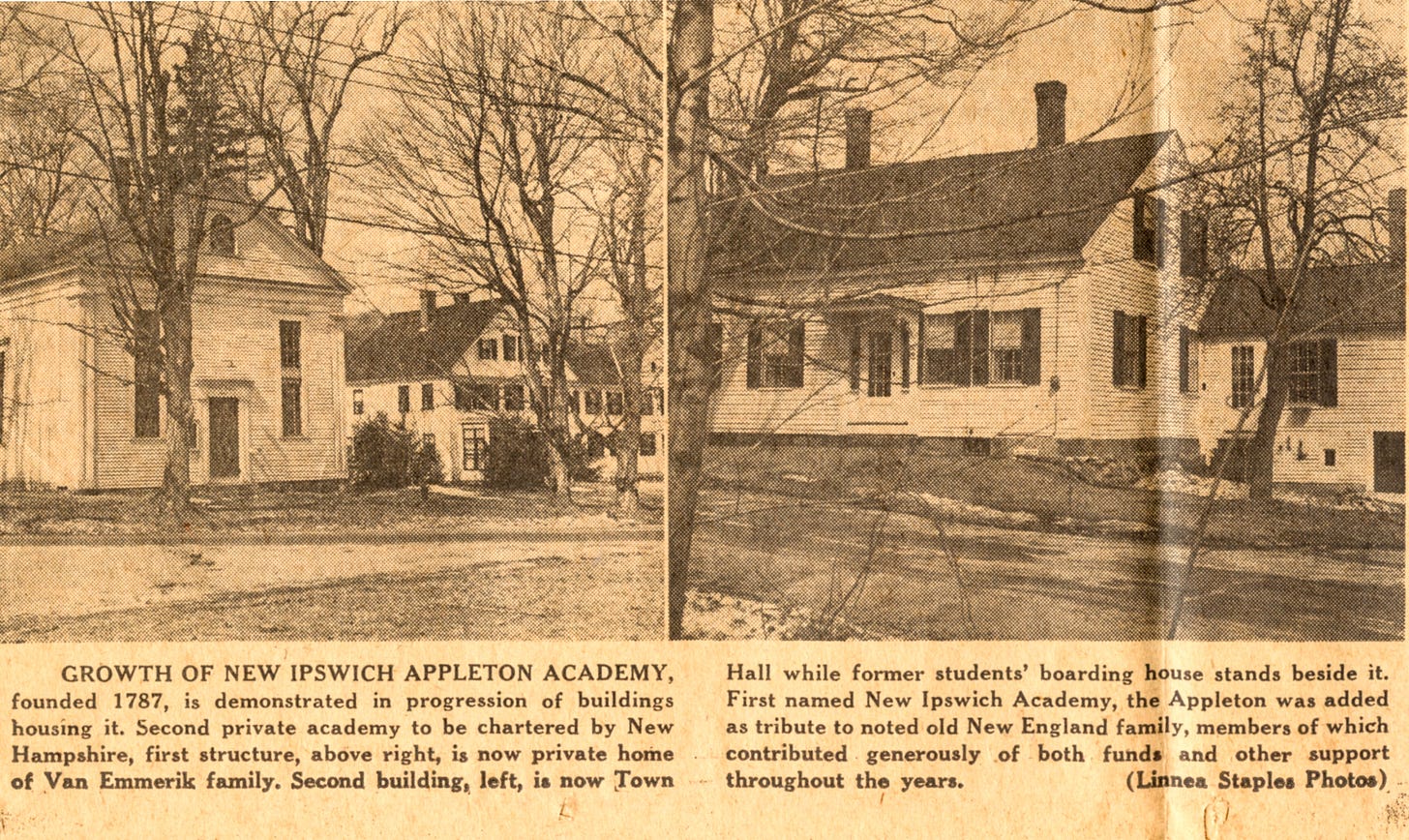
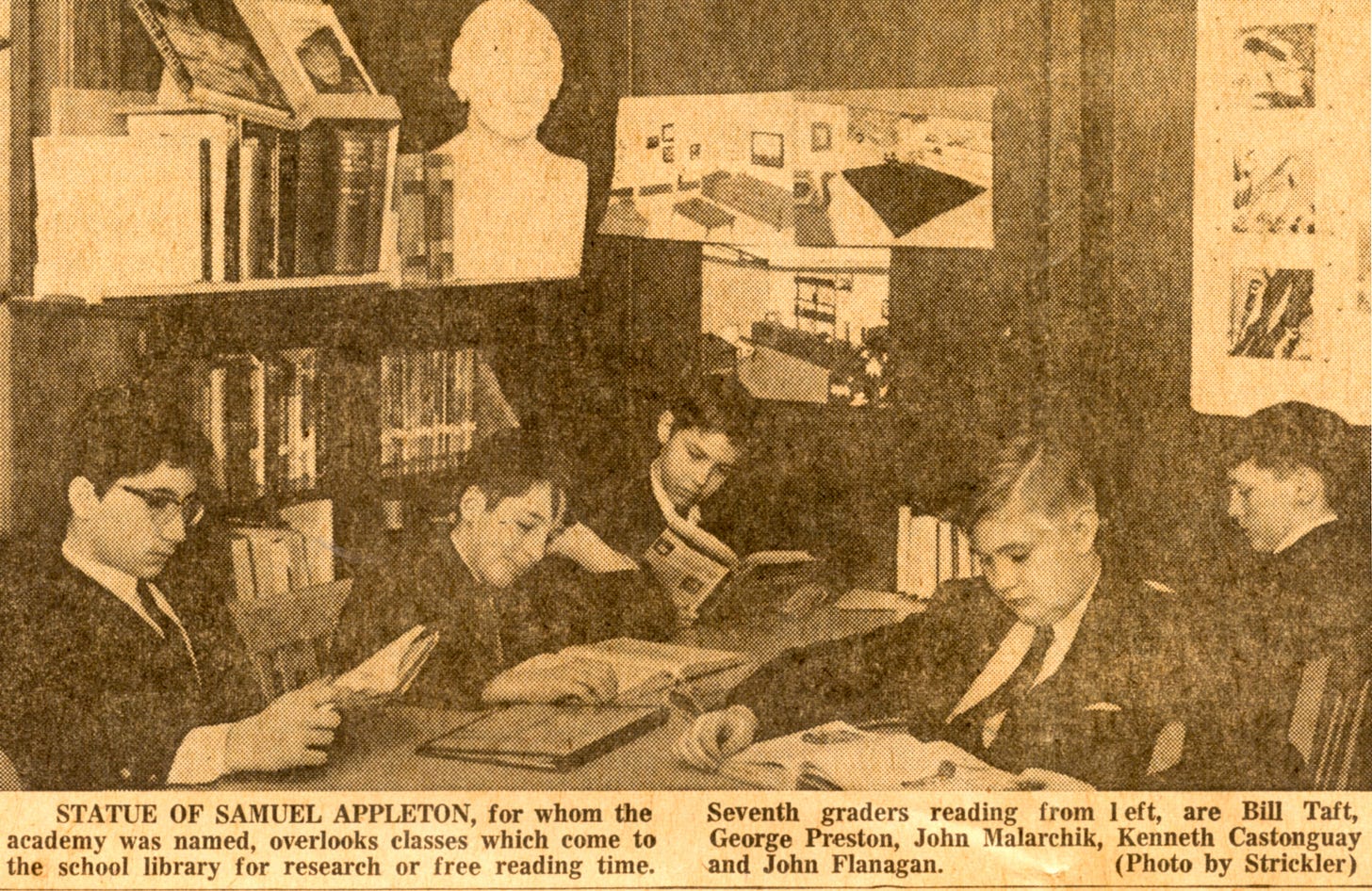
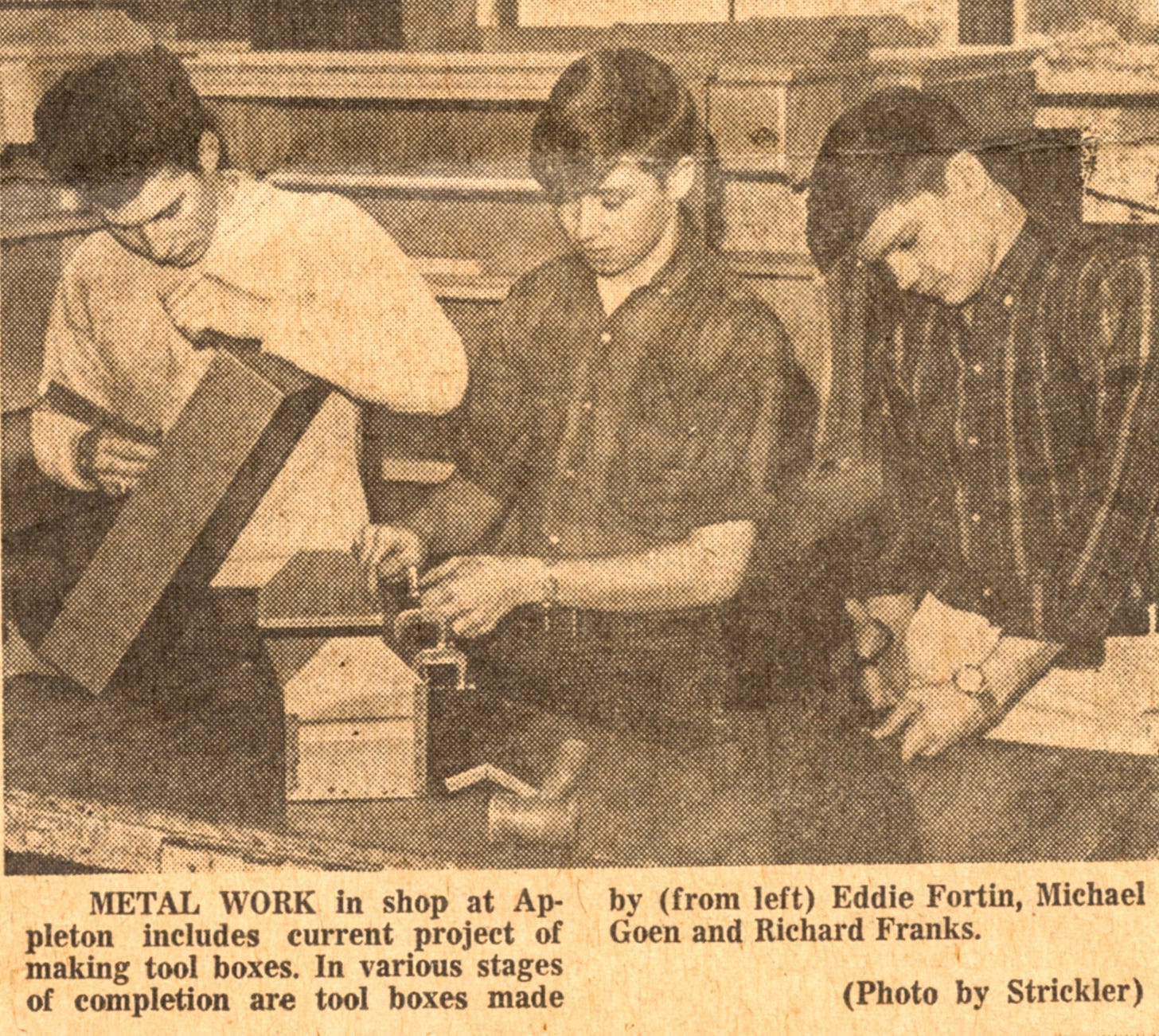
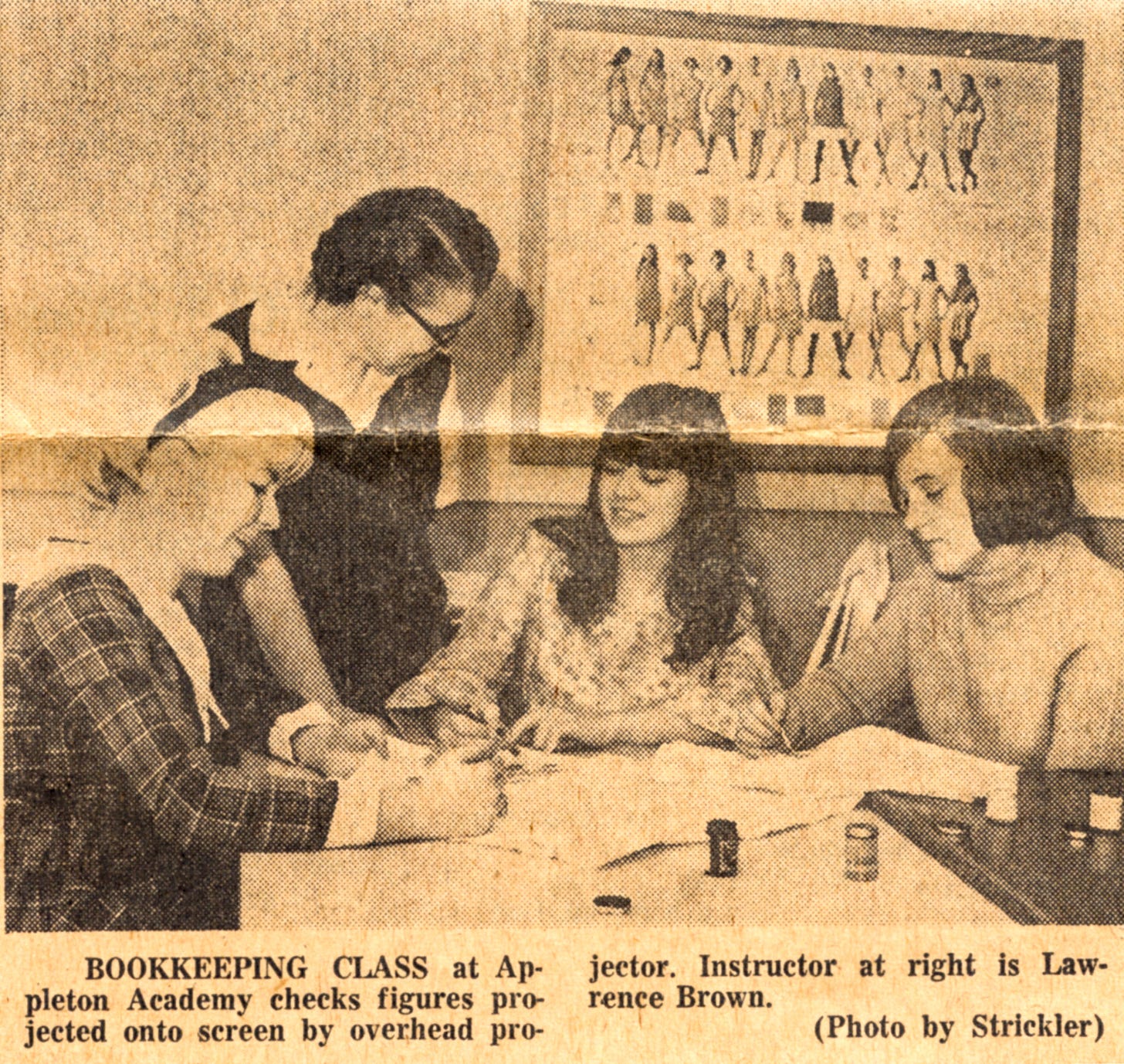
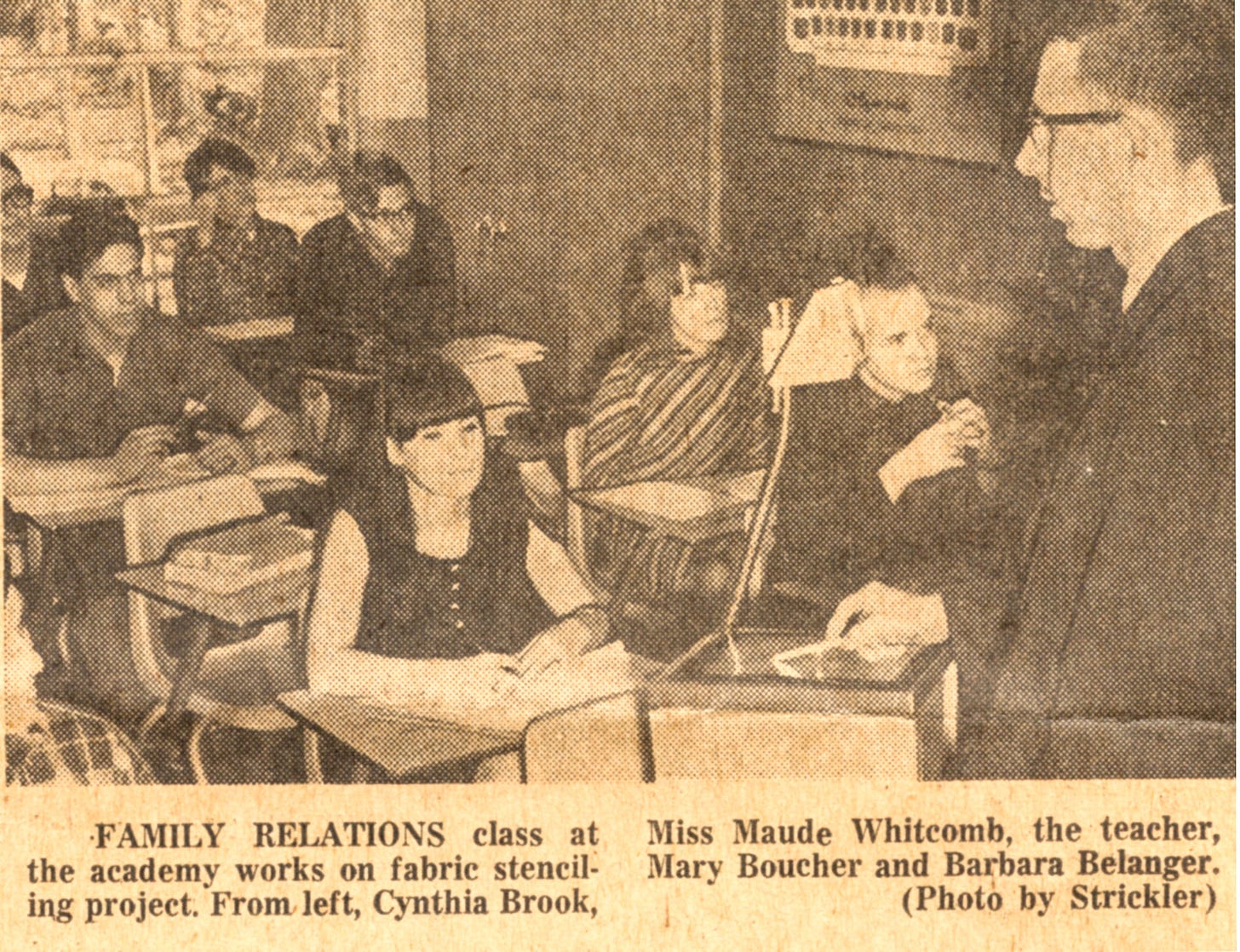
Since it's been 55 yrs since the closing of Appleton I suspect the majority of those now living in New Ipswich have no memories of, or emotional ties to Appleton. I wonder why the expansion plans put forth by the Trustees were rejected by local school boards.